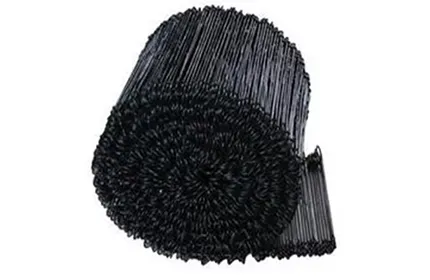-
 Phone:
Phone: -
 Email:
Email:

bale wire
The Versatility and Importance of Bale Wire
Bale wire is a fundamental component in agriculture and recycling, playing a crucial role in the process of bundling and securing materials. Typically made from high-tensile steel or wire, bale wire is designed to hold bales of hay, straw, cotton, or recyclables tightly together for storage and transportation. Its strength and durability make it an indispensable tool for farmers, recyclers, and manufacturers alike.
In the agricultural sector, bale wire is often used in conjunction with balers, machines that compress materials into tight bales for easy handling. For farmers, properly secured bales are essential for preventing spoilage and ensuring that feed remains dry and intact. The use of bale wire minimizes the risk of bales breaking apart or becoming damaged, ultimately saving time and money. Moreover, its resistance to environmental factors such as moisture and UV light extends the lifespan of bales, contributing to the sustainable management of resources.
Apart from agriculture, bale wire is extensively utilized in the recycling industry. With the increasing emphasis on recycling materials to reduce waste, bale wire serves to compact recyclable materials like paper, plastics, and metal. Baling these items allows for more efficient transportation to recycling facilities, streamlining the process and minimizing the carbon footprint associated with waste processing. Additionally, the use of bale wire in recycling promotes better organization and storage, improving overall operational efficiency.
bale wire

The selection of bale wire varies greatly depending on specific needs. Variants such as single-loop or double-loop wire offer different benefits, with double-loop wire generally providing greater security due to its additional loops. Furthermore, bale wire is available in various gauges, allowing users to choose the appropriate thickness based on the weight and type of material being secured. This level of customization ensures that users can find the perfect bale wire solution for their unique requirements.
In addition to its practical applications, bale wire also plays a role in the creation of eco-friendly solutions. Many manufacturers are now producing bale wire from recycled materials, emphasizing sustainability and reducing the environmental impact of production. This approach aligns with global efforts to promote responsible resource management and eco-conscious practices, making bale wire not only a practical tool but also a symbol of progress toward a more sustainable future.
In conclusion, bale wire is a vital component in both agriculture and recycling, contributing to efficiency, sustainability, and effective resource management. Its versatility and strength make it an essential tool for various industries, adapting to the ever-evolving needs of farmers and recyclers alike. As we continue to embrace responsible practices, the role of bale wire in securing our resources will undoubtedly remain significant.
-
Wire Mesh for Every Need: A Practical SolutionNewsJul.25,2025
-
Steel Fences: Durable, Secure, and Stylish OptionsNewsJul.25,2025
-
Roll Top Fencing: A Smart Solution for Safety and SecurityNewsJul.25,2025
-
Cattle Farm Fencing Solutions for Maximum SecurityNewsJul.25,2025
-
Affordable Iron Binding Wire SolutionsNewsJul.25,2025
-
Affordable Galvanized Wire SolutionsNewsJul.25,2025
-
Wire Hanger Recycling IdeasNewsJul.25,2025








